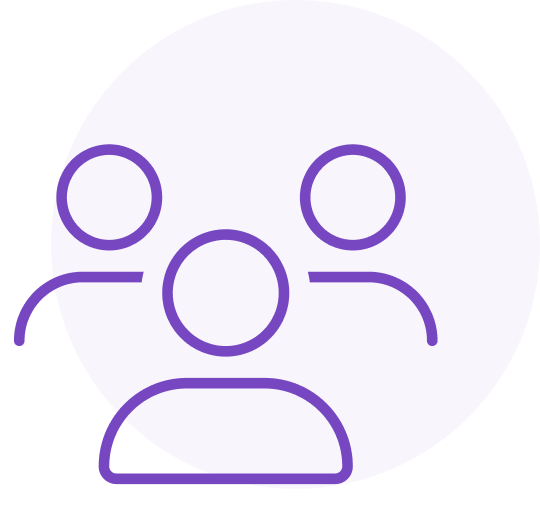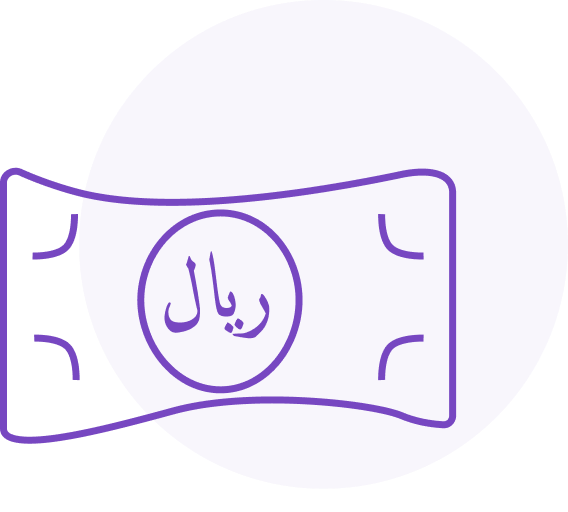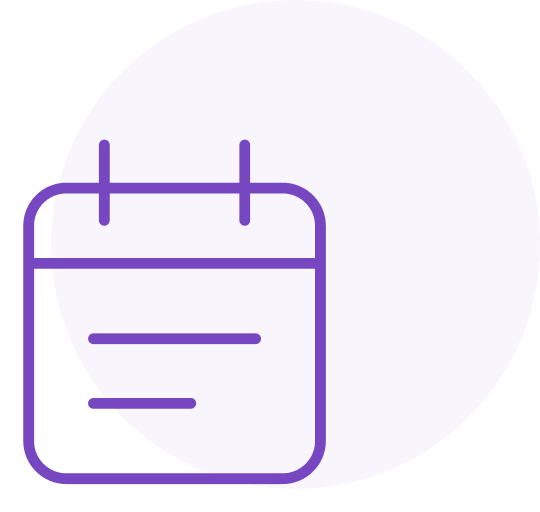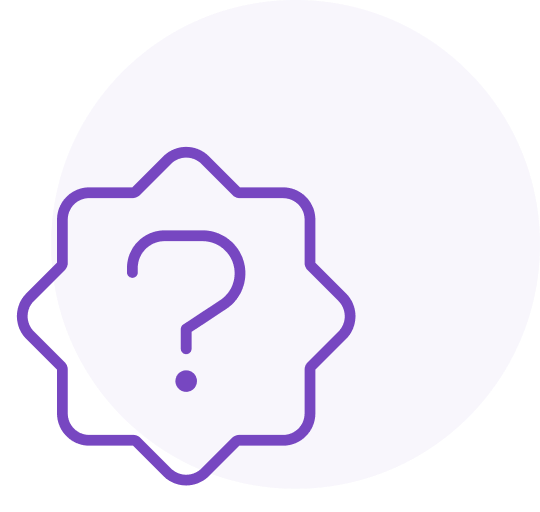This certificate is a recognition of the holder’s ability to design eLearning experiences professionally, through a comprehensive analysis of the learning environment, the target group, and the goals to be achieved, including supportive solutions to increase the learning outcomes by applying the best educational practices through the learning design of the entire learning system.
Requirements:
Click on the option that matches your qualifications:
* Year: Includes one academic year in its entirety.
How to obtain the certificate:
- Create an account on the Professional Certificate website.
- Upload the required and updated certificates and documents.
- Choose the appropriate location for the exam via the website and pay the fee.
- Wait for the application to be checked and reviewed.
- Pass the exam.
- Get the certificate.
Continuous Professional Development:
Professional developments should be uploaded on the applicant's profile periodically on an annual basis to ensure the continued validity of the certificate. Such practices include attending conferences, meetings, lectures or seminars, attending or participating in online or regular workshops and training, submission and participation in procedural research, scientific papers or training packages)
You can enroll in the Induction Program of the Professional Certificate in the eLearning Experience Design: Here
* Note: The program is an introduction to the competencies of professional certificates and is not the only reference for them.
It provides you with the most basic concepts that help you research and expand multiple sources periodically to ensure the validity of the certificate.
Target Audience
- Instructional Designers
- Digital Learning Specialists
- Teachers and Faculty members
- Trainers
Fees
1500 SR
Certificate Validity
Four years starting from the date of issuance.
You can also attend one of the following training courses:
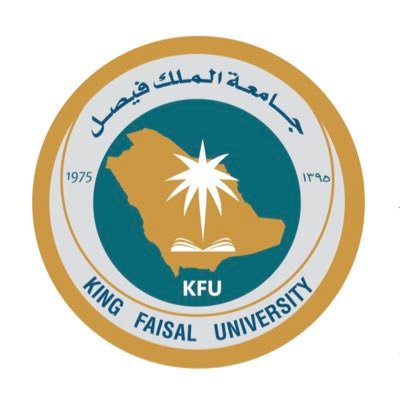
Imam Abdulrahman bin Faisal University
Competencies:
Training is carried out according to specific competencies that the applicant acquires after training and qualifying from some of the approved institutions by the National eLearning Center.
6
Domains
18
Competencies
81
Indicators
1.1 Digital Tools and Apps
1.1.a: Skill in designing content that considers affordances of different types of devices and platforms.
1.1.b: Skill in finding, evaluating, and selecting the right technology that helps in achieving the learning objectives through the eLearning design process within the constraints of national policy.
1.1.c: Skill in finding, evaluating, and selecting the right technology tools and applications that help achieve the specific online learning needs and learning objectives for a subject area.
1.2 Digital Citizenship
1.2.a: Skill in facilitating the design of eLearning experiences that model and promote responsible digital behavior through appropriate selections and use of tools and applications.
1.2.b: Skill in ensuring that there is the appropriate management of learner and educator personal data and privacy in devices, tools, and applications.
1.2.c: Skill in ensuring that digital rights and responsibilities are adhered to.
1.2.d: Skill in applying national and international policies on digital ethics.
1.3 Digital Resources
1.3.a: Skill in ensuring legal intellectual property selection and use of instructional resources, digital tools, and applications.
1.3.b: Skill in managing file size, consistency of multimedia, clarity of audio, and user control.
1.3.c: Skill in finding, evaluating, and curating quality online content resources relevant to learning objectives.
1.3.d: Skill in including multimodal resources to accommodate learners' interests, experience, and levels of knowledge.
1.3.e: Skill in including activities that involve interactivity and, where appropriate, demonstrations and immersive learning environments.
1.3.f: Skill in providing online resources that go beyond the constraints of the formal course structure so that learners can engage in self-directed and extended learning.
1.3.g: Skill in providing alternative online resources in order to ensure inclusion and accessibility.
1.3.h: Skill in developing new online resources or adapting others where existing resources are unavailable or unsuitable.
1.3. i: Skill in relating theoretical perspectives to practical applications of relevance to learners' professional fields by making full use of multimedia, immersive, and augmented tools and applications.
1.4 Digital Troubleshooting
1.4.a: Skill in troubleshooting and resolving basic issues for themselves and educators, faculty, and instructors.
1.4.b: Skill in setting backup plans to use other alternative technologies for the same learning objectives within the instructional design.
2.1 Data and Analytics
2.1.a: Skill in working with stakeholders to undertake a needs analysis of learners, educators, faculty, and instructors for working online to meet teaching/training and learning objectives.
2.1.b: Skill in identifying and evaluating multiple types of data, including learners' performance data, robustness of the technology, and suitability of resources, tools, and applications to assess the learning experience design and ensure that continuous quality improvements can be made.
2.1.c: Skill in regulating data access for authorized users and ensuring reliability.
2.1.d: Skill in providing essential course maintenance and updates to technologies, tools, and applications.
2.2 Planning
2.2.a: Skill in applying national and institutional education policies to the course design, where relevant.
2.2.b: Skill in meeting the applicable laws and mandates for accessibility and delivering online instruction to learners, including those with disabilities.
2.2.c: Skill in maintaining accurate records of information and communication.
2.2.d: Skill in designing the content, structure, and organization of a course to enhance a memorable learning experience.
2.2.e: Skill in orienting educators, faculty, instructors, and learners to the eLearning course design, structure, and technical support resources.
3.1 Online Learning Design
3.1.a: Skill in design that takes account of the purpose and assumptions of each online course.
3.1.b: Skill in providing a range of tools and applications that meet the varying learning objectives and demands of each subject domain.
3.1.c: Skill in working with stakeholders to sequence online courses to promote efficient understanding, knowledge acquisition, and consistent presentation of units and lessons.
3.1.d: Skill in including both passive and active learning opportunities.
3.1.e: Skill in understanding theories of learning and how they can be applied in an online context.
3.1.f: Skill in providing educator or instructor-led as well as learner-centered and self-directed learning activities.
3.1.g: Skill in designing differentiated tasks and activities that consider learners’ skills and preferences.
3.1.h: Skill in providing active learning activities in which learners can practice newly acquired skills and improve understanding, using interactive tools where appropriate.
3.1.i: Skill in blending varied digital tools and resources to create an integrated digital learning environment to support learners’ higher order thinking and problem-solving skills.
3.1.j: Skill in providing collaborative learning activities that support soft skills development to enhance future career opportunities.
3.1.k: Skill in designing dynamic online learning environments that help learners gain a comprehensive view of their professional fields and career pathways and promote the experiential understanding of their content knowledge.
3.2 Synchronous and Asynchronous Teaching/Training and Learning
3.2.a: Skill in including synchronous and asynchronous activities to meet different learning objectives.
3.2.b: Skill in providing appropriate platforms for collaboration and communication between learners, between educators and learners, and between educators.
3.2.c: Skill in providing training to educators about using online asynchronous and synchronous collaboration tools, including social media, with other learning resources to enhance learning outcomes.
3.2.d: Skill in helping educators understand how online synchronous classes may differ from face-to-face classes and provide guidelines for effective teaching/training and learning strategies.
3.3 Engagement and Motivation
3.3.a: Skill in promoting and using a variety of engagement techniques that apply an active learning model and strong learner support to maintain learner attention in online webinars and self-paced coursework.
3.3.b: Skill in including activities and assignments that provide learners with a degree of autonomy and timely support that will motivate them to achieve the desired objectives.
3.3.c: Skill in building authentic learning activities.
3.3.d: Skill in including simulations of real-world and hands-on learning experiences that allow learners to practice their employability, engage in workplace scenarios, and grow further as individuals.
3.4 Inclusion and Extension
3.4.a: Skill in catering to the learning needs of each learner.
3.4.b: Skill in demonstrating cultural awareness by providing online resources that are appropriate, multicultural, and free of bias.
4.1 Assignments
4.1.a. Skill in designing assignment expectations that are clear, meaningful, and effective.
4.1.b: Skill in designing assignments that demonstrate the practical application of learning objectives and, where relevant, include images or video evidence.
4.1.c: Skill in designing group assignments that support easy identification of individuals' contributions.
4.1.d: Skill in designing assignments in accordance with industry and academic guidelines, real-world experience, and professional learning objectives.
4.2 Examinations
4.2.a: Skill in setting out assessment criteria in line with learning objectives and outcomes.
4.2.b. Skill in setting formal and informal formative assessment points throughout an online course.
4.2.c: Skill in ensuring a variety of assessment activities to test types and levels of achievement.
4.2.d: Skill in providing details and strategies to address technological and other issues to ensure that assessments can be submitted and marked online.
4.2.e: Skill in designing online peer and self-assessment strategies.
4.2.f: Skill in designing appropriate assessment methods that best suit the purpose given the skills, abilities, and outcomes the instructor is evaluating, including the business demands of the workplace and industries.
4.2.g: Skill in designing assessments that can easily detect plagiarism.
4.2.h: Skill in the use of identity verification mechanisms during examinations and assessments.
5.1: Learmers
5.1.a: Skill in effective online communication strategies to elicit feedback from learners.
5.1.b: Skill in providing the potential to create online communities for learner collaboration and peer teaching/training.
5.1.c: Skill in communicating with all stakeholders for course design and operation feedback.
5.2 Educators
5.2.a: Skill in building positive and collaborative relationships with educators and other relevant colleagues to design eLearning courses.
5.2.b: Skill in communication and collaborating with national and international learning experience designers on online course production.
5.2.c: Skill in communicating and engaging with educators throughout the online course design process and making changes as and when appropriate to ensure that learning objectives are met through effective eLearning design.
5.2.d: Skill in providing clear guidelines for educators using their own resources and assignments in a course.
5.2.e: Skill in working across departments to coordinate online learning needs, including technologies, tools, and applications, in order to offer a seamless learning experience and provide the best generic solution for integrating and accessing subject-specific applications.
5.2.f: Skill in working across departments to ensure a seamless and consistent learning experience for cross-and interdisciplinary courses.
5.3.Administrators/SMT
5.3.a: Skill in regular communication and consultation using appropriate online formats and channels.
5.3.b: Skill in timely feedback and response to directives.
5.3.c: Skill in communicating evaluation feedback from learners, parents, and educators
6.1 Reflection
6.1.a: Skill in identifying personal and professional opportunities for growth.
6.1.b: Skill in gathering feedback from learners, parents, and colleagues to continuously improve eLearning design.
6.2 Time Management
6.2.a: Skill in demonstratingeffective time management.
.2.b: Skill in sequencing all aspects of the eLearning design process to achieve timely results.
6.2.c: Skill in setting timelines and managing stakeholders to provide course deliverables on time.
6.3 Lifelong Learning
6.3.a: Skill in developing, maintaining, and leveraging professional networks across a range of people and groups, both internal and external to the organization.
6.3.b: Skill in continually expanding their own subject knowledge and keeping abreast of new developments in learning experience design.
6.3.c: Skill in promoting continuous learning among other learning experience designers, both internal and external to their own eLearning program.
6.3.d: Skill in establishing a professional voice that creates ongoing credibility for the eLearning program design by participating and presenting at conferences and conducting scholarly research on effective eLearning design.
